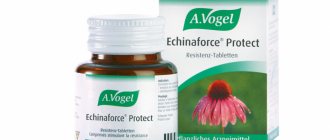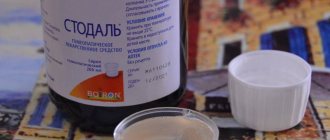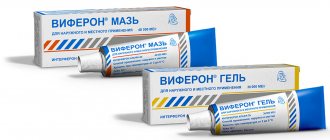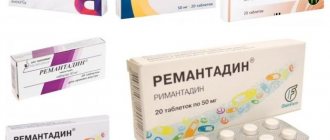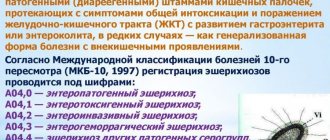Vilprafen
Vilprafen (INN josamycin) is a macrolide antibiotic. It exhibits bacteriostatic and, in high concentrations, bactericidal action. Effective in the treatment of infections caused by staphylococci (including those producing penicillinase), streptococci, corynebacteria, neisseria, Haemophilus influenzae, bordetella, rickettsia, treponema, mycoplasma, chlamydia, some types of shigella, ureaplasma, clostridia. It has virtually no effect on enterobacteria, therefore it does not introduce an imbalance into the natural microflora of the gastrointestinal tract. Can be used in cases of resistance to erythromycin. Resistance to Vilprafen itself develops less frequently and more slowly than to other macrolides. One of the advantages of the drug is its lipophilicity, which ensures rapid penetration of the active substance in therapeutic concentrations into cells and tissues. When using tablet forms of josamycin, its concentration in white blood cells, epithelial cells, macrophages, phagocytes and monocytes is 20 times higher than in the interstitial space. This property of the drug makes it an ideal means of combating chlamydial infections, because The life cycle of these bacteria takes place inside the cell. Compared to other antibiotics, Vilprafen has a very high cure rate for chlamydia - 97% (azithromycin - 55%, doxycycline - 50%). The wide range of therapeutic effects of Vilprafen allows its use in the treatment of mixed bacterial infections, incl. caused by representatives of anaerobic microflora. The drug is practically devoid of teratogenic and embryotoxic effects, which makes it available to pregnant women and provides effective prevention of chlamydia in the neonatal period.
In addition to infections of the genitourinary tract, Vilprafen is used in the treatment of infections of the ENT organs, respiratory tract, oral cavity, soft tissues, and dermatological infections. After oral administration, it is quickly and completely absorbed from the digestive tract. The presence of food masses in the intestines does not affect the bioavailability of the drug (i.e. it can be taken regardless of meals, which is very convenient). The maximum concentration of the active substance in the blood is observed 1-2 hours after administration. It undergoes metabolic transformations in the liver, and the resulting metabolites have less therapeutic activity than the original substance. It is excreted from the body through the biliary (with bile) and genitourinary (with urine) tract. It has a small number of side effects, mainly from the digestive tract (appetite disturbance, nausea, dyspepsia, abdominal cramps, impaired choleretic function). When prescribing Vilprafen, it is necessary to take into account the possibility of adverse interactions with co-administered medications. Thus, this antibiotic slows down the elimination of the antiallergic drugs astemizole and terfenadine, which can lead to the development of severe ventricular arrhythmias. Vilprafen also potentiates the side effects of theophylline, digoxin, and ergot alkaloids (vasoconstrictor effect). And the other side of the coin: Vilprafen can reduce the effectiveness of penicillin and cephalosporin antibiotics, and in combination with lincomycin, the effectiveness of both drugs decreases. For elderly patients, Vilprafen is prescribed in lower doses. ECG monitoring is mandatory in persons concomitantly taking digoxin.
The place of josamycin in the treatment of acute respiratory infections of bacterial etiology in children
T.A. KHOKHLOVA
,
A.S.
POLYAKOVA , Ph.D.,
M.B.
BAKRADZE , Doctor of Medical Sciences,
Scientific Center for Children's Health of the Russian Academy of Medical Sciences, Department of Diagnostics and Rehabilitation Treatment
The article presents modern information about the natural macrolide antibiotic josamycin, the results of domestic and foreign studies on the sensitivity and resistance of various types of pathogens to it, as well as data and positive experience of its use in the treatment of acute respiratory infections in children.
The problem of rational therapy of infectious diseases in children does not lose its relevance today. Despite the presence of a large number of available domestic and foreign recommendations and consent documents, the percentage of unjustified prescription and inadequate selection of antimicrobial drugs remains high, which creates conditions for the growth of resistance of pathogenic microorganisms.
The purpose of this work is to highlight new data on josamycin, which has been used in clinical practice in the Russian Federation for more than 20 years, its scope of application and the level of resistance to it in such common pathogens of respiratory tract infections in children as Streptococcus pyogenes, Streptococcus pneumoniae, Mycoplasma pneumoniae.
general information
Josamycin is a natural 16-membered macrolide produced by the fungus Streptomyces narbonensis var. josamyceticus. It has been used in clinical practice since 1970. The mechanism of the bacteriostatic effect of josamycin is associated with a disruption of protein synthesis in the microbial cell due to binding to the 50S ribosomal subunit.
Josamycin is metabolized in the liver mainly by hydroxylation to form several metabolites, one of which has weak antibacterial activity. The maximum concentration in the blood serum is reached after 0.75 hours and is 2.74 mg/kg, AUC 4.2 µmol/h×l. The advantage of josamycin is its low level of binding to plasma proteins - 15%, while for roxithromycin this figure reaches 90% [1].
Excretion of josamycin occurs primarily through the biliary system. Less than 20% of the active drug is found in the urine. Its half-life from the body averages 1-1.5 hours; in older people it can increase to 3.5 hours, with an even higher rate in the presence of liver cirrhosis.
Data on the distribution of josamycin in the body were published back in 1989 by P. Periti et al. [2]. In the pharyngeal tonsil, discharge of the paranasal sinuses, the concentration of josamycin is 1.6 mg/kg and 2.8 mg/kg, respectively, after 3 hours, with a smaller amount in sputum (0.75 mg/kg), bronchial aspirate (0.52 mg/kg). kg), bone tissue, intraocular fluid, gums. The highest concentration of the drug 1 hour after administration is achieved in the palatine tonsils (21.24 mg/kg). However, the effectiveness of josamycin is determined not so much by the concentration in the tissue, but by its good ability to penetrate into cells. Its greatest accumulation is observed in alveolar macrophages, neutrophils and monocytes with a level 20 times higher than the concentration in the extracellular space. Accumulating in neutrophils, josamycin enhances oxidative reactions, potentiating the ability for phagocytosis and killing. A pronounced synergism of the antibiotic with the bactericidal activity of the peroxidase systems of neutrophils was also revealed [3]. The results of a study published in 2010 showed that macrolides improve the chemotactic and phagocytic function of monocytes, and also have an anti-inflammatory effect, influencing the production of pro-inflammatory cytokines and mediators [4].
Antibacterial drugs from the macrolide group can change the pharmacokinetics and metabolism of other drugs. Thus, the interaction of josamycin with theophylline and cyclosporine A was confirmed, however, compared to erythromycin, this effect is less pronounced. 14-membered macrolides are characterized by interaction with microsomal liver enzymes, which in turn helps to increase the concentration of other drugs in the blood plasma. 16-membered macrolides, in particular josamycin, do not have such properties.
Adverse reactions
It is known that there is a motilin-like (prokinetic) effect inherent in all macrolides, that in children in the first two months of life, especially premature ones, the use of 14- and 15-membered macrolides can lead to the development of pyloric stenosis. This reaction has been described with the use of erythromycin and azithromycin [5]. 16-membered macrolides are practically devoid of prokinetic action, which largely determines the choice of these drugs for the treatment of chlamydial pneumonia and conjunctivitis in children of this age group. There is evidence of a slight increase in the level of liver transaminases while taking this drug (Fraschini, 1990; Straneo and Scarpazza, 1990), isolated cases of eosinophilia, as well as the appearance of a rash [6]. Other side effects include headache and dizziness (less than 1%). The only case of josamycin-induced edema of the lower extremities was published in the BMJ in 1993. Three days after taking the drug in therapeutic doses prescribed in connection with “atypical” pneumonia, with normal sodium and total protein levels, a 56-year-old man developed bilateral diffuse swelling of the lower extremities. Josamycin was replaced by erythromycin, and after two days the swelling stopped. However, due to complaints of nausea and vomiting, the antibiotic was again replaced by josamycin. After 2 days, the swelling resumed and completely disappeared only after completing the course of antibacterial therapy. There was no pathophysiologically substantiated explanation for this situation.
Antimicrobial activity
In terms of the spectrum of antimicrobial activity, josamycin does not differ significantly from erythromycin, but the value of its minimum inhibitory concentration for most sensitive microorganisms is 2-4 times higher than that of erythromycin. Josamycin is active against staphylococci, streptococci, listeria, and corynebacteria. It is the most active among macrolides against multidrug-resistant strains of S. pneumoniae and erythromycin-resistant strains of S. pyogenes. Josamycin has been shown to be active against some erythromycin-resistant strains of S. aureus and coagulase-negative staphylococci. At the same time, the rapid development of resistance to josamycin in streptococcal strains characteristic of the oral cavity (S. sanguis, S. mitis) was noted when attempting to use the drug for the prevention of bacterial endocarditis during dental procedures. Among the gram-negative flora, B. pertussis, H. influenzae, M. catarrhalis, Legionella, Campylobacter are sensitive to josamycin. Like other macrolides, it is not active against gram-negative bacteria Enterobacteriaceae, Pseudomonas spp. and Acinetobacter spp. In terms of its effect on C. trachomatis, C. pneumoniae and M. pneumoniae, josamycin does not differ significantly from erythromycin [1].
Resistance and its causes
Resistance to macrolides can be caused by three factors. The first factor is associated with modification of the target of action of macrolides at the level of the bacterial cell. In ribosomal 50S subunits, structural changes occur such as methylation of adenine in 23S ribosomal RNA under the action of the enzyme erythromycin resistance methylase. As a result, the ability of macrolides to bind to ribosomes is disrupted and their antibacterial effect is blocked. This type of resistance is called MLS-type, since it may underlie microflora resistance not only to macrolides, but also to lincosamides. Such resistance can be either natural (constitutive) or acquired (inducible). Inducers of resistance development that enhance the synthesis of methylases are 14-membered macrolides, especially erythromycin and oleandomycin. This type of resistance is also present in some strains of S. pneumoniae, S. pyogenes, M. catarrhalis, Legionella, Campylobacter, M. pneumoniae and other microorganisms, but it is relevant only for 14- and 15-membered macrolides and does not apply to josamycin.
Another mechanism is based on the so-called. efflux, i.e. the active expulsion of a macrolide from a microbial cell. S. epidermidis and many streptococci have this ability.
The third mechanism of resistance is less common and is associated with bacterial inactivation of macrolides, which is carried out through enzymatic cleavage of the lactone ring by esterases (for example, erythromycin esterase) or phosphotransferases (macrolide 2′-phosphotransferase). They are produced by S. aureus and gram-negative bacteria of the Enterobacteriaceae family [3].
The difference in resistance lies mainly in the efflux mechanism of resistance. Thus, the increase in the resistance of microorganisms to macrolides has become a major problem in the field of practical healthcare in recent years. It has been proven that it directly depends on the frequency of macrolide administration and is caused by their excess consumption. Similarly, the number of resistant strains progressively decreases with a sharp decrease in the use of these drugs in the population [7].
According to the European Center for Disease Prevention and Control (ECDC) for 2012, the percentage of pneumococcal resistance to macrolides varied from 2.2% in Estonia to 44.4% in Romania [8]. R.S. Kozlov et al. in a large-scale study for 1999-2009. showed that during this time the pharmacodynamic activity of macrolides in vitro remained at a relatively stable level, while the proportion of insensitive strains did not exceed 8.2% for 14- and 15-membered macrolides (erythromycin, azithromycin, clarithromycin) and 6.3% for 16-membered macrolides (midecamycin acetate, spiramycin, josamycin) [9]. In turn, S.V. Sidorenko demonstrated that in the Moscow region for 2004-2007. the highest percentage of resistance was detected to erythromycin up to 10.7%, and lower to josamycin - 7.9% [10]. According to a multicenter study of PeGAS III conducted in Russia, of all macrolide antibacterial drugs, the lowest level of pneumococcal resistance was recorded to josamycin - 2.5%, which determines its advantage in comparison with other representatives of this class.
Regarding the pediatric population, in the Russian Federation we can talk about the highest resistance of pneumococci to 14- and 15-membered macrolides in the age group of 12-18 years, amounting to 9.3-9.9%, while in children under 3 years of age it does not exceed 6.6%, and from 3 to 12 years - 4.5% [11].
According to L.K. Katosova, obtained in clinical studies, the level of resistance to azithromycin exceeded 20%, which echoes the report of N.A. Mayansky, who gives results regarding erythromycin - 26% among all serotypes of pneumococcus clindamycin - 20% [12, 13].
Over the last decade, according to world data, an increase in resistance to macrolides of pyogenic streptococcus has also been registered. Thus, in 2003, Austrian scientists published the results of a study showing 100% sensitivity of group A β-hemolytic streptococcus (GABHS) to penicillin, amoxicillin and cephalosporins, and overall resistance to macrolides was 13.3%. At the same time, its resistance to erythromycin in adults reached 19.1%, and in children - 11.8%. However, regarding josamycin, this figure did not exceed 1.5% [14]. In the Russian Federation, according to reports from 2004-2007, a high level of GABHS resistance to 14- and 15-membered macrolides (erythromycin, clarithromycin, azithromycin) was also recorded, which is 7.7 in Moscow, 8.3 in Yaroslavl, 19 .6 - in Tomsk and 28.2 - in Irkutsk. And resistance to the 16-membered macrolide josamycin, according to the same study, does not exceed 0.7% [10].
Josamycin is also active against Arcanobacterium haemolyticum, which causes tonsillitis in adolescents and is resistant to β-lactam antibiotics [15].
Until now, there has been no disagreement in the literature regarding the drugs of choice for the treatment of so-called. atypical infections caused by C. and M. pneumoniae: traditionally they were antibiotics from the macrolide group. However, over the last decade, strains resistant to this group of drugs have been identified, and their number is growing in countries such as Japan, China, Germany, France, Israel, and the USA. Despite the persistence of sensitivity to fluoroquinolones, this poses real challenges to the treatment of lower respiratory tract infections in pediatric patients. The journal Future microbiology in 2011 provides the following data on the prevalence of macrolide-resistant phenotypes of M. pneumoniae during an epidemic of mycoplasma infection: in the USA - 3 out of 11 isolates, in Germany for the period 1991-2009. - 3 out of 99 isolates, in France - 2 out of 155, respectively.
In 2000-2011 A large study was conducted in South Korea that showed a tremendous increase in macrolide-resistant strains of M. pneumoniae. If they were not detected in 2000, then by 2006 14.7% of resistant strains were recorded, and in 2011 - 62.9% [16]. In China, this figure was even higher and amounted to 90% [17]. Resistance in both countries was mainly due to point mutations in the 23S ribosomal subunit rRNA genes and, in a few cases, due to efflux. There are no definitive data on the prevalence of resistant strains of M. pneumoniae in the Russian Federation yet, but several studies are being conducted on this matter.
With regard to C. pneumoniae, there is still no unified, standardized, generally accepted method in the world for determining the sensitivity of antibacterial drugs to this pathogen.
Antibacterial therapy
The choice of antibacterial therapy for community-acquired pneumonia is based on clinical signs of the disease, radiological data and is regulated by Russian and foreign consensus documents developed by authoritative communities. The American Academy of Pediatrics (AAP) and the British Thoracic Society (BTS) recommend amoxicillin as a starting antibiotic for the treatment of community-acquired pneumonia due to the highest prevalence of S. pneumoniae as an etiological pathogen and its high sensitivity to aminopenicillins [18 , 19]. However, in the case of the clinically most likely mycoplasma etiology of pneumonia, empirical treatment with macrolides is possible. For example, during an epidemic of mycoplasma infection, in the presence of a combination of high fever with persistent cough, conjunctivitis and minor hematological changes with a characteristic or “erased” X-ray picture, in the absence of a significant disturbance in the child’s well-being, it is possible to begin treatment with macrolides or a combination of macrolides and amoxicillin.
However, in practice, according to M.D. Bakradze, before hospitalization, children with typical (mainly pneumococcal) pneumonia were prescribed macrolides in 44% of cases, and with “atypical” pneumonia - only in 36% [20]. Unfortunately, these data indicate insufficient awareness of outpatient pediatricians about the clinical manifestations of community-acquired pneumonia of various etiologies.
Due to the good sensitivity of pneumococcus to 16-membered macrolides, if an “atypical” etiology of pneumonia is suspected, in our clinic preference is given to josamycin.
The starting antibiotic for the treatment of acute streptococcal tonsillitis is also amoxicillin at a dose of 45-50 mg/kg/day for 10 days. This treatment achieves clinical recovery, eradication of GABHS and minimizing the risk of developing delayed complications. A history of a proven allergic reaction to penicillins is a contraindication for the use of amoxicillin. It is also not prescribed for suspected Epstein-Barr viral etiology of tonsillitis due to the high risk of an “ampicillin” rash.
Macrolides can serve as an alternative to amoxicillin in such situations. According to the above data on the resistance of S. pyogenes to this group of antibiotics, the use of josamycin is advisable for the eradication of GABHS. It is also listed in the list of antibacterial drugs for primary health care for acute tonsillitis in children and adults (according to orders of the Ministry of Health of the Russian Federation dated December 20, 2012 No. 1205n “On approval of the standard of primary health care for acute tonsillitis” and dated December 24, 2012 No. 1505n “On approval of the standard of specialized medical care for acute tonsillitis”).
A study by French authors, which included 325 children, compared a 5-day course of josamycin (50 mg/kg/day in 2 divided doses) with a 10-day course of penicillin (50-100 thousand units/kg/day in 3 divided doses). Both regimens showed similar good clinical efficacy - 90 and 89%, respectively, the rate of eradication of GABHS by the end of the course (82 and 80%) and the rate of bacteriological relapses after 1 month was no more than 12 and 12.8%, respectively [21].
A Russian study (92 children) compared 7- and 10-day courses of treatment with josamycin at a dose of 50 mg/kg/day. As a result, the high microbiological effectiveness of a 7-day course of treatment in children with acute streptococcal tonsillopharyngitis was demonstrated (eradication of the pathogen by the 11th day was observed in 100% of patients). Taking into account the above-mentioned features of GABHS resistance to macrolides in Russia, treatment of streptococcal tonsillitis with a 7-day course of josamycin may be promising if it is impossible to prescribe amoxicillin and cephalosporins [22].
Josamycin is approved for use in newborns weighing at least 2 kg at a dose of 40-50 mg/kg/day. This drug is well tolerated and over the many years of its use in our clinic, only 1 case of an ephemeral allergic rash was observed. We also did not find data on the development of adverse events during treatment with josamycin in other institutions in the country [23].
Speaking about the benefits of josamycin, one should also point out the presence of the drug in the form of Solutab. The dispersible dosage form provides a predictable, stable therapeutic effect and minimizes the likelihood of adverse reactions. The controlled release of the active substance also provides masking of its taste, which increases the level of compliance. Sugar, gluten, and significant allergens are excluded from the fillers of Solutab tablets, which removes restrictions on the use of this drug in patients with the corresponding pathology [24].
Literature
1. Infectious Diseases. Jonathan Cohen, Steven M. Opal Elsevier Ltd., 2010. Chapter 135. P. 1361-1365. 2. Periti P, Mazzei T, Mini E et al. Clinical pharmacokinetic properties of the macrolide antibiotics. Effects of age and various pathphysiological states (part I). Clin. Pharmacokinet., 1989, 16: 193-214. 3. Strachunsky L.S., Kozlov S.N. Macrolides in modern clinical practice. Section II. Characteristics of individual drugs: 16-membered macrolides. 4. Xiugong Gao, Radharaman Ray, Yan Xiao, Keiko Ishida, Prabhati Ray. Macrolide antibiotics improve chemotactic and phagocytic capacity as well as reduce inflammation in sulfur mustard-exposed monocytes. Pulmonary Pharmacology & Therapeutics, 2010, 23: 97-106. 5. Morrison W. Infantile hypertrophic pyloric stenosis in infants treated with azithromycin. Pediatric Infectious Disease Journal, 2007, 26 (2): 186-188. 6. Kucers' the use of antibiotics. A clinical review of antibacterial, antifungal, antiparasitic and antiviral drugs. M Lindsay Grayson, Suzanne M Crowe, James ~ McCarthy, John Mills, Johan W Mouton, S Ragnar Norrby, David L Paterson, Michael A Pfaller. 6th ed., 2010. P. 822. 7. Ron Dagan, Keith P. Klugman, William Craig, Fernando Baquero. Evidence to support the rational that bacterial eradication in respiratory tract infection is an important aim of antimicrobial therapy. Journal of Antimicrobial Chemotherapy, 2001, 47: 129-140. 8. European center for disease prevention and control. Antimicrobial resistance surveillance in Europe, 2012: 51-58. 9. Kozlov R.S., Sivaya O.V., Krechikova O.I., Ivanchik N.V. Dynamics of Streptococcus pneumoniae resistance to antibiotics in Russia for the period 1999-2009. Clinical Microbiology and Antimicrobial Chemotherapy, 2010, 12-24: 1-13. 10. Sidorenko S.V., Grudinina S.A., Filimonova O.Yu., Stolyarova L.G., Savinova S.A. Resistance to macrolides and lincosamides among Streptococcus pneumoniae and Streptococcus pyogenes in the Russian Federation. Clinical Pharmacology and Therapeutics, 2008, 17-2: 1-4. 11. Sivaya O.V. Oral communication, 2012. 12. Sereda E.V., Katosova L.K. The place of azithromycin in pediatric practice. Modern pediatrician, 2010, 6(34): 1-3. 13. Nikolay Mayanskiy, Natalia Alyabieva, Olga Ponomarenko, Anna Lazareva, Lubovj Katosova, Alexander Ivanenko, Tatiana Kulichenko, Leila Namazova-Baranova, Alexander Baranov. Serotypes and antibiotic resistance of non-invasive Streptococcus pneumoniae circulating in pediatric hospitals in Moscow. Russian International Journal of Infectious Diseases, 2014, 20: 58-62. 14. Robert Sauermann, Rainer Gattringer, Wolfgang Graninger, Astrid Buxbaum and Apostolos Georgopoulos. Phenotypes of macrolide resistance of group A streptococci isolated from outpatients in Bavaria and susceptibility to 16 antibiotics. Journal of Antimicrobial Chemotherapy, 2003, 51: 53-57. 15. Tatochenko V.K. For every day pediatrician – 2012. 7th ed., additional. M.: Borges, 2012. 16. Ki Bae Hong, Eun Hwa Choi, Hoan jong Lee, Seong Yeon Lee, Eun Young Cho, Jae Hong Choi, Hyun Mi Kang, Jina Lee, Young Min Ahn, Yeon-Ho Kang and Joon -Ho Lee. Macrolide resistance of Mycoplasma pneumoniae, South Korea, 2000-2011. Emerging Infectious Diseases, 2013, Aug., 19(19): 1281-1283. 17. Yang Liu, Xinyu Ye,l Hong Zhang, Xiaogang Xu, Wanhua Li, Demei Zhu, Minggui Wang. Characterization of macrolide resistance in Mycoplasma pneumoniae isolated from children in Shanghai, China. Diagnostic Microbiology and infectious disease, 2010, 67: 355-358. 18. Michael Harris, Julia Clark, Nicky Coote, Penny Fletcher, Anthony Harnden, Michael McKean, Anne Thomson. Guidelines for the management of community acquired pneumonia in children: update 2011. Thorax., 2011, 66: 2. 19. John S. Bradley,1,a Carrie L. Byington,2,a Samir S. Shah,3,a Brian Alverson,4 Edward R. Carter,5 Christopher Harrison. The Management of Community-Acquired Pneumonia in Infants and Children Older Than3 Months of Age: Clinical Practice Guidelines by the Pediatric Infectious Diseases Society and the Infectious Diseases Society of America, 2011. 20. Bakradze M.D. New therapeutic, diagnostic and organizational technologies for the management of children with acute febrile illnesses. Diss. Dr. med. Sci. M., 2009. 21. Treatment of acute group A beta! hemolytic streptococcal tonsillitis in children with a 5-day course of josamycin. Portier H, Bourrillon A, Lucht F et al. Arch Pediatr., 2001, 8(7): 700-6. 22. Krechikov V.A., Katosova L.K., Kopytko L.N., Rozanova S.M., Shilova V.P., Krechikova O.I., Ivanchik N.V., Kozlov S.N. Comparison of the microbiological effectiveness of a 7- and 10-day course of josamycin for acute streptococcal tonsillopharyngitis in children: preliminary results of a Russian multicenter study. Clinical microbiology and antimicrobial chemotherapy, 2009, 11(2): 21. 23. Tatochenko V.K. Josamycin in pediatric practice. Pediatrics, 2011, 90(5): 125-128. 24. Ushkalova E. The importance of dosage forms for rational antibiotic therapy. Dosage form Solutab. Physician, 2007, 3: 1-4.
Source
: Medical Council, No. 1, 2015
Josamycin
Josamycin
(lat.
josamycin
) - a natural antibiotic of the macrolide class.
Produced by streptomycetes of the species Streptomyces narbonensis
.
Josamycin is a chemical compound
Chemically, josamycin is leukomycin V 3-Acetate-4B-(3-methylbutanoate) (and propionate). It has a 16-membered lactone ring (in the diagram below right). The empirical formula of josamycin is C42H69NO15. Josamycin is highly soluble in methanol and ethanol, soluble in ether and practically insoluble in water. The molecular weight of josamycin is 827.995.
Josamycin is a drug
Josamycin is the international nonproprietary name (INN) of the drug. According to the pharmacological index, josamycin belongs to the group “Macrolides and azalides”. According to ATC, josamycin is included in the group “J01 Antibacterial drugs for systemic use” and has the code J01FA07.
Microorganisms against which josamycin is active or inactive
Josamycin in high concentrations is active against the following bacteria:
- gram-negative: Neisseria gonorrhoeae, Neisseria meningitidis
, some species of
Shigella, Haemophilus influenzae, Bordetella pertussis - gram-positive: Staphylococcus spp., Streptococcus spp.
, including
Streptococcus pyogenes and Streptococcus pneumoniae, Bacillus anthracis, Corynebacterium diphtheriae - intracellular parasites: Mycoplasma spp.
, including
Mycoplasma hominis, Mycoplasma pneumoniae, Chlamydia spp.
, including
Chlamydia trachomatis, Chlamydia pneumoniae, Ureaplasma urealyticum, Legionella pneumophila - anaerobic: Peptococcus spp., Peptostreptococcus spp., Clostridium perfringens, Bacteroides fragilis
It is believed that resistance of microorganisms to josamycin develops less than to other macrolides.
Indications for use of josamycin
Josamycin is used in the treatment of acute and chronic infections caused by bacteria, against which Josamycin is active. Infections of the upper respiratory tract and ENT organs (tonsillitis, pharyngitis, paratonsillitis, laryngitis, otitis media, sinusitis, diphtheria - in addition to treatment with diphtheria toxoid, scarlet fever in case of hypersensitivity to penicillin); lower respiratory tract infections (acute bronchitis, exacerbation of chronic bronchitis, pneumonia, including those caused by atypical pathogens, whooping cough, psittacosis); dental infections (gingivitis and periodontal disease); infections in ophthalmology (dacryocystitis, blepharitis); infections of the skin and soft tissues (pyoderma, furunculosis, anthrax, erysipelas - with hypersensitivity to penicillin, acne, lymphangitis, lymphadenitis, lymphogranuloma venereum); infections of the genitourinary system (prostatitis, urethritis, gonorrhea, syphilis - with hypersensitivity to penicillin, chlamydia, mycoplasma, including ureaplasma, and mixed infections) (Instructions for the drug).
Josamycin in Helicobacter pylori eradication regimens
According to the recommendations of Maastricht I–III, for gastric ulcers, duodenal ulcers, atrophic gastritis, MALToma and gastric resection after gastric cancer, when Helicobacter pylori
, its eradication is indicated.
The first-line eradication regimens recommended by Maastricht include the antibiotic clarithromycin. In recent years, in Russia, Helicobacter pylori
to clarithromycin has reached 28–29%.
Therefore, antibiotics began to appear that replaced clarithromycin in eradication therapy, in particular, josamycin (Minushkin O.N. et al.). The Scientific Society of Gastroenterologists of Russia recommends the use of josamycin, as an alternative to clarithromycin, in three main first-line regimens for eradication of Helicobacter pylori
(see Standards for the diagnosis and treatment of acid-dependent and Helicobacter pylori-associated diseases (4th Moscow Agreement), adopted by the X Congress of the NOGR 5.03. 2010):
Option 1.
One of the standard dosage proton pump inhibitors (omeprazole 20 mg, lansoprazole 30 mg, pantoprazole 40 mg, esomeprazole 20 mg, rabeprazole 20 mg twice daily), amoxicillin (500 mg four times daily or 1000 mg twice daily) and josamycin (1000 mg 2 times a day) for 10–14 days.
Option 2.
The drugs used in the first option (one of the PPIs in a standard dosage, amoxicillin and josamycin) with the addition of a fourth component - bismuth tripotassium dicitrate 120 mg 4 times a day or 240 mg 2 times a day for 10-14 days.
Option 3 (in the presence of atrophy of the gastric mucosa with achlorhydria, confirmed by pH-metry).
Amoxicillin (500 mg 4 times a day or 1000 mg 2 times a day), josamycin (1000 mg 2 times a day) and bismuth tripotassium dicitrate (120 mg 4 times a day or 240 mg 2 times a day) for 10–14 days .
Professional medical publications addressing the use of josamycin in the eradication of Helicobacter pylori
- Parolova N.I. Comparative assessment of the effectiveness of eradication therapy for H. pylori infection in children. Abstract of dissertation. PhD, 14.00.09 – pediatrics. SPbGPMA, St. Petersburg, 2008.
- Vertkin A.L., Masharova A.A. Treatment of peptic ulcer in a modern clinic // Attending physician. – 2000. – No. 8. – p. 14–19.
On the website gastroscan.ru in the literature catalog there is a section “Antibiotics used in the treatment of gastrointestinal diseases”, containing articles on the use of antimicrobial agents in the treatment of diseases of the digestive tract.
Method of administration of josamycin and dose
Josamycin is taken orally, between meals. The film-coated tablets should be swallowed whole with a small amount of water. Dispersible tablets can be taken in two ways: swallowed whole with water, or diluted with water (at least 20 ml) before use, and the resulting suspension is thoroughly mixed.
- for children under 14 years of age, the dose is determined based on 40–50 mg of josamycin per kg of child weight per day, divided into three doses per day
- for patients over 14 years of age - 1-2 g of josamycin per day is prescribed (the dose can be increased by the doctor to 3 g / day) in 2-3 doses, the initial recommended dose is 1 g
The duration of therapy is determined by the doctor.
When treating streptococcal infections - at least 10 days. When eradicating Helicobacter pylori
The duration, dose and order of taking josamycin are determined by the selected eradication regimen.
In the presence of atrophy of the gastric mucosa with achlorhydria, confirmed by pH-metry: amoxicillin 1 g 2 times a day + josamycin 1 g 2 times a day + tripotassium bismuth dicitrate 240 mg 2 times a day.
Treatment of acne vulgaris and globulus is 500 mg of josamycin twice a day for 2–4 weeks, then 500 mg of josamycin once a day for 8 weeks.
Use of josamycin during pregnancy and lactation
If indicated, josamycin can be used in the treatment of pregnant and breastfeeding mothers. The FDA category of effect on the fetus during treatment with josamycin has not been determined.
Interaction of josamycin with other drugs
Josamycin inhibits cytochrome P450 enzymes, suppresses metabolism and increases blood concentrations of indirect anticoagulants, theophylline, cyclosporine, carbamazepine, valproic acid, disopyramide, and ergot alkaloids in plasma. Josamycin is incompatible with terfenadine, astemizole, cisapride due to the risk of developing severe heart rhythm disturbances caused by prolongation of the QT interval. Simultaneous use with penicillins and cephalosporins reduces the effect of josamycin. Increases the bioavailability of digoxin when taken orally by reducing its inactivation by intestinal microflora. Antacids reduce the absorption of josamycin in the digestive tract.
Medicines containing the active ingredient josamycin
In Russia, two drugs with the active substance josamycin are (have) been approved: Vilprafen and Vilprafen Solutab.
The following brands of josamycin are registered in Europe: Josalid, Josacine, Iosalide, Josamina, and in Japan - Josamy. It is not approved for use in the USA.
There are contraindications, side effects and application features; consultation with a specialist is necessary. Back to section


